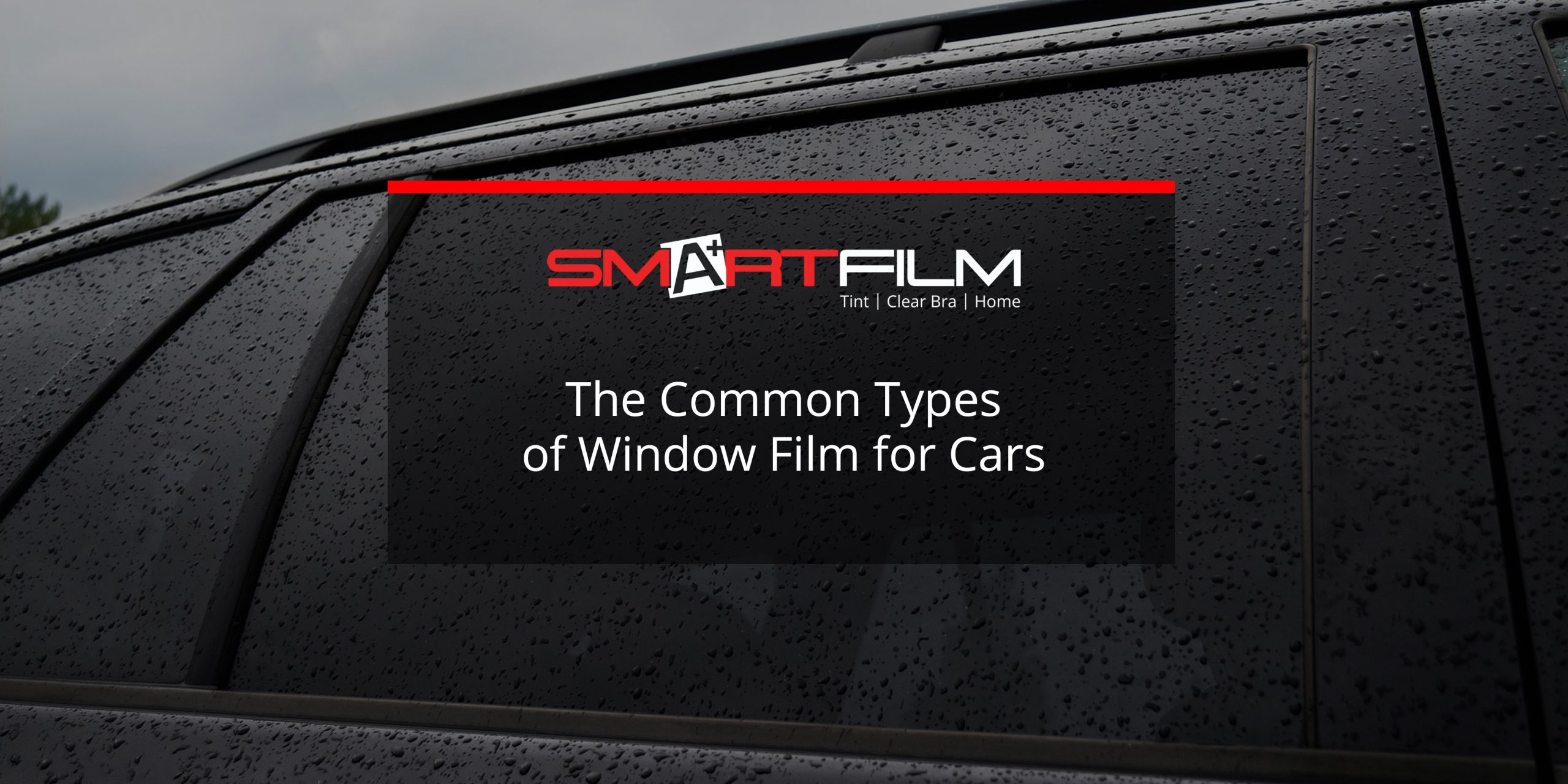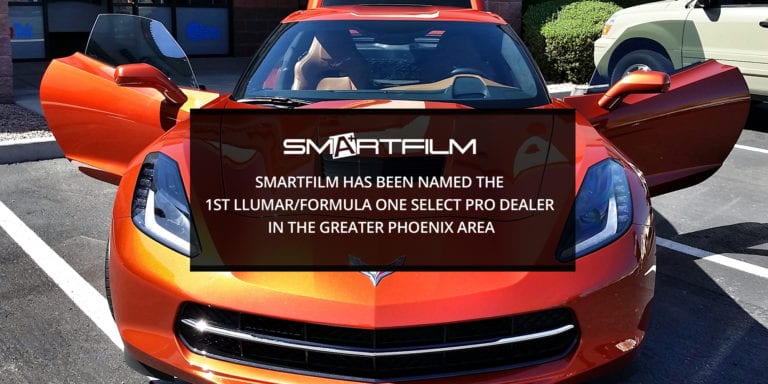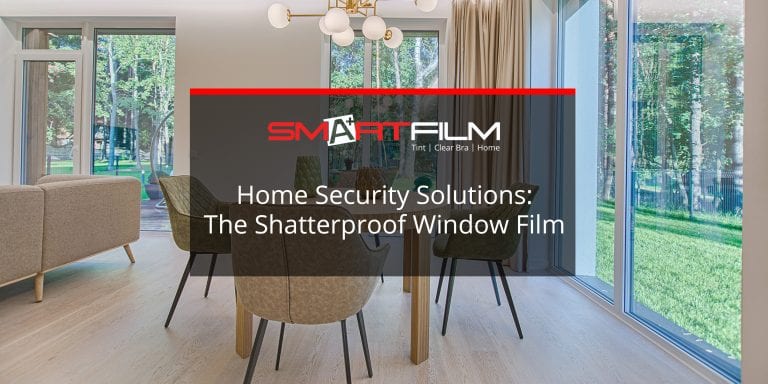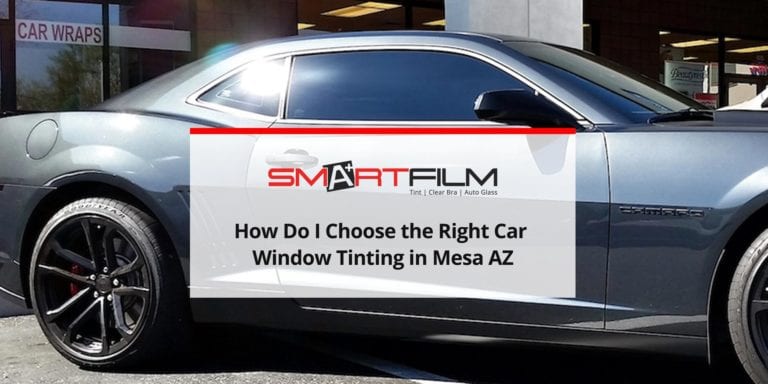The Common Types of Automotive Window Tint in Arizona
Window film for automotive tinting is a popular choice among vehicle owners in Arizona. It offers a range of benefits, from reducing heat and glare to enhancing privacy and safety. With the wide variety of window film types available, it can be challenging to choose the right one for your needs.
Understanding the common types of window film for automotive tints in Arizona can help you make an informed decision. From traditional dyed films to high-performance ceramic options, each type has its unique features and advantages. In this guide, we’ll explore the common types of window film for automotive tints in Arizona, helping you choose the best option for your vehicle.
Window Tint in Arizona
Applying window tint to your vehicle in Arizona is more than just a stylistic choice—it’s a practical necessity. Arizona’s environment is known for its intense sunlight and high temperatures, both of which can take a toll on your vehicle and your comfort level. Window tint helps protect your car’s interior from sun damage, reducing fading and cracking of upholstery, dashboard, and other surfaces. It also helps to keep the interior cooler by blocking out a significant amount of heat from the sun, which can be especially beneficial during Arizona’s scorching summers.
Moreover, window tint can enhance your driving experience by reducing glare, making it easier to see clearly, and reducing eye strain. It also adds a layer of privacy and security by making it more difficult for outsiders to see into your vehicle. In Arizona, where the sun shines brightly for most of the year, applying window tint is a practical and beneficial choice for both your vehicle and your comfort.
The market for window tints offers a diverse array of options, catering to various needs, preferences, and budgets. From traditional dyed films to advanced ceramic and nano-ceramic options, there’s a wide range of choices available to consumers. Dyed window tints are the most basic and affordable option, providing some heat and glare reduction along with privacy enhancement.
For you to be able to decide the most suitable type of window tinting according to your personal needs and preferences, we have prepared for you a list of the diverse types of window tint options available in the market:
Dyed Window Tint
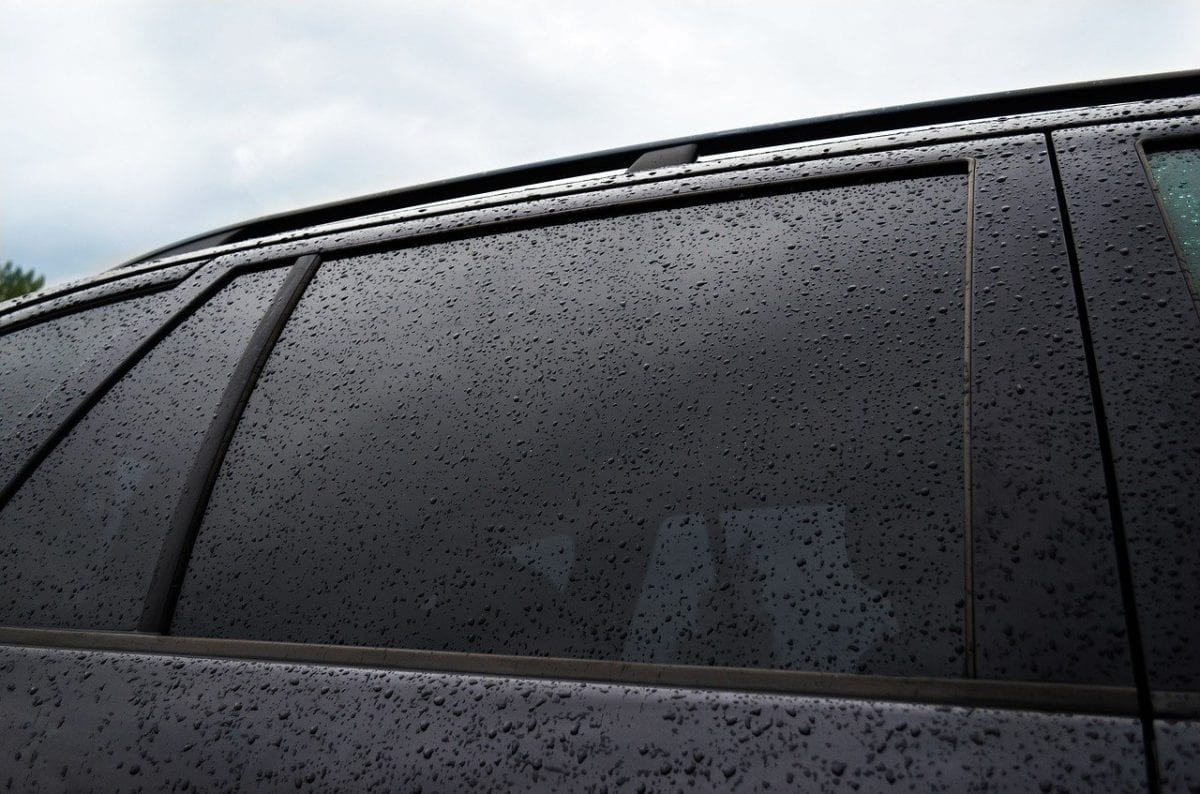
Dyed window tint is one of the most common and affordable options available in the market. Its functionality lies in its basic composition, where a layer of dye is applied to a polyester film. This dye absorbs solar heat and reduces the amount of light that passes through the window, providing moderate heat and glare reduction.
One of the primary advantages of dyed window tints is its affordability. It’s typically the least expensive option among window tint types, making it accessible to a wide range of consumers. Additionally, dyed tints can enhance privacy by making it difficult for outsiders to see into the vehicle while still allowing for decent visibility from the inside.
However, dyed window tint also has disadvantages. Over time, the dye in the film can degrade due to exposure to UV rays, leading to discoloration and fading. This can result in a less appealing appearance and reduced effectiveness in heat rejection.
Additionally, dyed tints may not provide as much heat rejection as other types of window tint, such as metalized or ceramic options. Furthermore, dyed tints may interfere with electronic signals, such as those used for GPS or mobile phone reception, although the extent of this interference can vary depending on the quality of the tint and the thickness of the film.
Metalized Window Tint
Metalized window tint utilizes tiny metal particles embedded in the film to achieve its functionality. These metallic particles reflect solar heat away from the vehicle, providing effective heat rejection and glare reduction. This reflective property also enhances the tint’s ability to maintain a cooler interior temperature, making it particularly beneficial in hot climates like Arizona. Additionally, metalized window tint offers increased durability compared to dyed tints, as the metal particles add strength to the film, making it more resistant to scratches and tears.
Metalized window tint counts with superior heat rejection capabilities. By reflecting solar heat away from the vehicle, metalized tints can significantly reduce the amount of heat that enters the interior, helping to keep occupants comfortable even on the hottest days. Moreover, the reflective nature of metalized tint provides enhanced privacy by making it difficult for outsiders to see into the vehicle while still allowing for good visibility from the inside.
However, the metallic particles in the film can interfere with electronic signals, such as those used for GPS, mobile phone reception, and keyless entry systems. This interference may result in reduced signal strength or connectivity, which can be inconvenient for drivers who rely on these technologies. Additionally, the reflective nature of metalized tint may not be suitable for all vehicles or aesthetic preferences, as it can give the windows a shiny or mirrored appearance that some individuals may not prefer.
Carbon Window Tint
Carbon tint is a popular choice among vehicle owners seeking enhanced performance and aesthetics. Its functionality stems from its unique composition, which incorporates carbon particles into the film. These carbon particles absorb infrared light and solar heat, providing effective heat rejection while maintaining excellent visibility and clarity. Unlike dyed tints, carbon window tints do not contain dyes that can degrade over time, resulting in better longevity and color stability.
One of the primary advantages of carbon tint is its superior heat rejection properties. By absorbing infrared light and solar heat, carbon tints can significantly reduce the amount of heat that enters the vehicle’s interior, helping to keep occupants comfortable in hot weather conditions. Additionally, carbon window tint offers enhanced UV protection, helping to prevent fading and damage to the vehicle’s interior surfaces.
Another advantage of carbon tint is its sleek appearance. Unlike metalized tints, which can have a reflective or mirrored finish, carbon tints provide a matte or charcoal-like appearance that complements the vehicle’s aesthetics. This non-reflective finish makes carbon window tint a popular choice for individuals seeking a more understated and stylish look for their vehicle.
While it offers excellent heat rejection and UV protection, it may not provide as much glare reduction as other types of window tint, such as ceramic options. Additionally, carbon tint tends to be more expensive than dyed tints, making it less accessible to budget-conscious consumers. Furthermore, like all types of window tint, carbon tints can potentially interfere with electronic signals, although the extent of this interference may vary depending on the quality of the tint and the thickness of the film.
Ceramic Window Tint
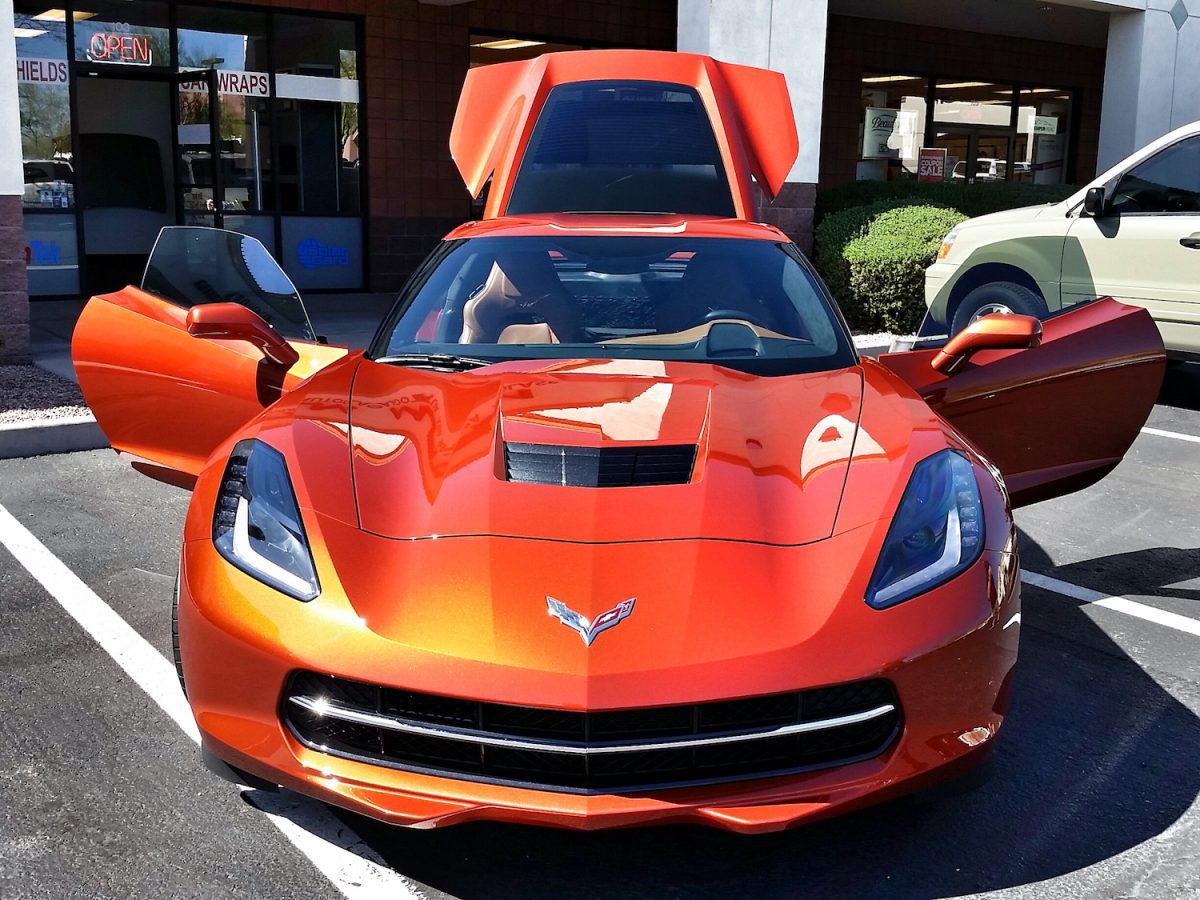
Ceramic window tint represents the pinnacle of window film technology, offering unparalleled performance and durability. Its functionality arises from the use of ceramic particles embedded in the film, which effectively block out infrared light and solar heat while maintaining exceptional clarity and visibility. Unlike dyed or metalized tints, ceramic window tints do not contain metals or dyes that can degrade over time, resulting in superior longevity and color stability.
One of the most significant advantages of ceramic window tint is its exceptional heat rejection capabilities. By blocking out infrared light and solar heat, ceramic tints can significantly reduce the amount of heat that enters the vehicle’s interior, providing maximum comfort for occupants even in the hottest climates. Additionally, ceramic window tint offers excellent UV protection, helping to prevent fading and damage to the vehicle’s interior surfaces.
Another advantage of ceramic window tint is its optical clarity. Unlike some other types of tint, ceramic tints maintain excellent visibility and clarity, both during the day and at night. This clarity allows for unobstructed views and minimizes distortion, enhancing the overall driving experience.
Furthermore, ceramic window tint is highly durable and scratch-resistant, making it suitable for long-term use without deteriorating in performance or appearance. Its non-metallic composition also ensures that it does not interfere with electronic signals, such as those used for GPS, mobile phone reception, and keyless entry systems.
Unfortunately, ceramic window tint is not without its disadvantages. It tends to be more expensive than other types of tint, making it less accessible to budget-conscious consumers. Additionally, the installation process for ceramic tint may be more complex, requiring specialized skills and equipment. Despite these drawbacks, the superior performance and durability of ceramic window tint make it a popular choice for discerning vehicle owners seeking the best in heat rejection, UV protection, and optical clarity.
Dual Reflective Window Tint
Dual reflective window tint is a specialized type of window film that incorporates both metalized and dyed layers to achieve its functionality. Its unique construction allows it to offer a balance of heat rejection, glare reduction, and privacy enhancement. The metalized layer reflects solar heat away from the vehicle, while the dyed layer absorbs light and provides additional heat and glare reduction. This dual reflective design results in a tint that effectively blocks out a significant amount of heat and glare, making it ideal for hot and sunny climates like Arizona.
One of the advantages of dual reflective window tint is its versatility. By combining the benefits of both metalized and dyed tints, dual reflective tints offer enhanced performance across a range of metrics, including heat rejection, glare reduction, and privacy enhancement. This makes them a popular choice for vehicle owners who want comprehensive protection and comfort.
Additionally, dual reflective window tint provides a sleek and stylish appearance. The combination of metalized and dyed layers creates a unique reflective effect that enhances the vehicle’s aesthetics while providing increased privacy by making it difficult for outsiders to see into the vehicle. This added privacy can be particularly beneficial for individuals who value discretion and security.
However, the metalized layer in the tint may interfere with electronic signals, such as those used for GPS, mobile phone reception, and keyless entry systems. This interference can result in reduced signal strength or connectivity, which may be inconvenient for drivers who rely on these technologies. Additionally, dual-reflective tints tend to be more expensive than single-layer tints, making them less accessible to budget-conscious consumers.
IR Rejection Window Tint

IR (infrared) rejection window tint is a specialized type of window film designed to block out a high percentage of infrared light, which is responsible for much of the heat buildup inside a vehicle. Its functionality revolves around its ability to selectively filter out infrared wavelengths while allowing visible light to pass through largely unaffected. By blocking infrared light, IR rejection window tint effectively reduces the amount of heat that enters the vehicle’s interior, resulting in a cooler and more comfortable driving experience, particularly in hot and sunny climates like Arizona.
By specifically targeting infrared wavelengths, this type of tint can achieve higher levels of heat reduction compared to standard window tints. This means that vehicle occupants can enjoy a cooler interior temperature and reduced reliance on air conditioning, leading to potential energy savings and increased comfort.
Additionally, IR rejection window tint offers the benefits of UV protection and glare reduction, similar to other types of window tint. By blocking out harmful UV rays, it helps to protect the vehicle’s interior surfaces from fading and damage while also reducing glare to improve visibility and reduce eye strain for the driver and passengers.
However, IR rejection window tint may come with some disadvantages. One potential drawback is its cost, as specialized IR rejection films tend to be more expensive than standard window tints. Additionally, the installation process for IR rejection tint may require specialized skills and equipment, which can add to the overall cost.
The Importance of a High-Quality Window Tint Service
Implementing window tint services with a qualified and experienced team is crucial for ensuring a successful and satisfactory outcome. Window tint installation requires precision, skill, and knowledge of the tinting process to achieve optimal results. A qualified team will have the expertise to properly assess each vehicle’s needs and recommend the most suitable tinting solution based on factors such as climate, driving habits, and aesthetic preferences.
Experience plays a key role in the quality of window tint installation. An experienced team will have encountered a wide range of vehicles and tinting challenges, allowing them to tackle any issues that may arise during the installation process effectively. They will be familiar with the intricacies of different vehicle models and window shapes, ensuring a seamless and professional-looking finish.
Proper preparation, handling, and application of window tinting materials are essential to avoid damage to the vehicle’s windows or interior components. Additionally, experienced professionals will be aware of local regulations and guidelines regarding window tint darkness and reflectivity, ensuring compliance with legal requirements.
Contact Us!
Our expert window tinting and paint protection film services in Mesa, Tempe, Gilbert, and the surrounding Arizona metro area will keep your car cooler, protect your loved ones from UV rays, and maintain its pristine condition.
FAQ’s
If my window film is damaged, can it be fixed?
Yes, damaged window film can often be repaired depending on the extent and nature of the damage. Minor scratches or tears may be repairable through techniques such as buffing or patching, while more significant damage may require the replacement of the affected portion of the film. It’s best to consult with a professional window tinting service to assess the damage and determine the most appropriate course of action for repair or replacement.
What aspects should I take into consideration when deciding on one of the types of automotive window tint?
When deciding on a type of automotive window tint, consider factors such as your desired level of heat rejection, UV protection, glare reduction, privacy needs, budget, and local regulations regarding tint darkness and reflectivity. Additionally, think about the durability and longevity of the tint, as well as any potential interference with electronic signals. Consulting with a professional window tinting service can also help you make an informed decision based on your specific needs and preferences.
